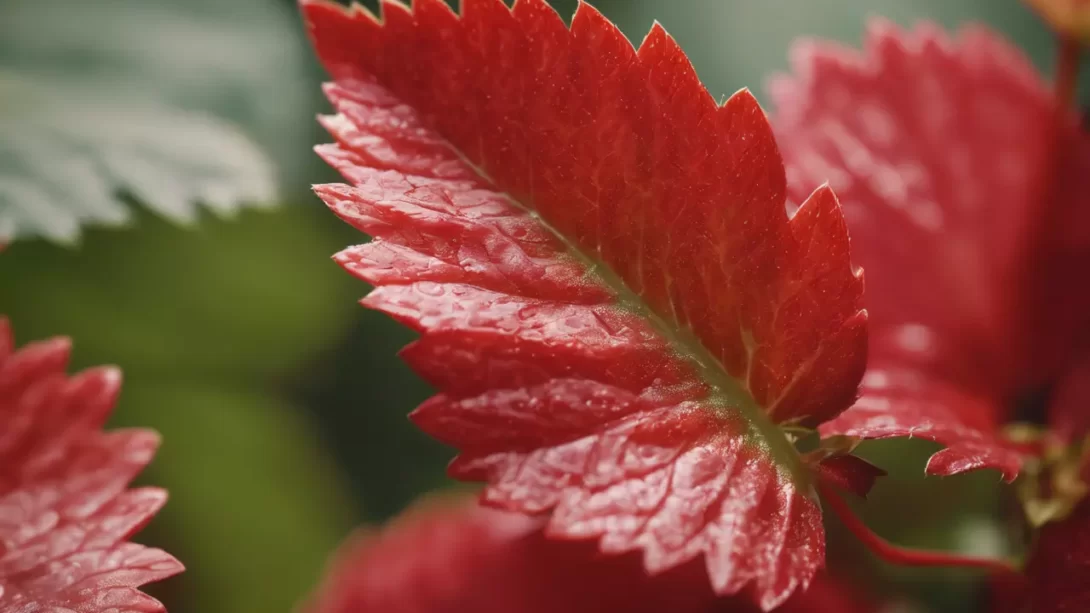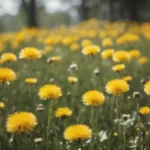Strawberry plants are a popular choice for gardeners, valued for their sweet fruit and relatively easy care. However, a common concern among strawberry growers is when the leaves of these plants start turning red. This article aims to explore the various reasons behind this discoloration and to provide effective solutions to address it.
Strawberry Plants
Strawberry plants, known for their lush green leaves and juicy red fruit, are a staple in many home gardens. Healthy foliage is crucial for the plant’s growth and fruit production. The leaves are indicators of the plant’s overall health; changes in their color can signal that the plant is facing stress or disease.
Common Causes of Red Leaves in Strawberry Plants
Red leaves on strawberry plants can be caused by a range of factors, from environmental stressors to diseases and pests. Understanding these causes is the first step in addressing the issue.
Environmental Stressors
Several environmental factors can lead to the reddening of strawberry leaves:
- Temperature Fluctuations: Strawberries are sensitive to extreme temperatures. Cold weather can cause leaves to turn red or purplish, while excessive heat can stress the plant, leading to a similar response.
- Water Stress: Both overwatering and underwatering can affect strawberry plants. Overwatering can lead to root rot and nutrient deficiencies, while underwatering can cause dehydration, both of which can result in red leaves.
- Nutrient Deficiencies: A lack of essential nutrients, particularly manganese and magnesium, can lead to discolored leaves. Poor soil conditions or improper fertilization can contribute to these deficiencies.
Diseases and Pests
Diseases and pests are other common culprits behind red leaves in strawberry plants:
- Fungal Diseases: Diseases like leaf scorch and red stele, caused by fungal pathogens, can lead to red or purplish spots and discoloration on the leaves.
- Pest Infestations: Certain pests, such as spider mites and aphids, can damage the leaves, causing them to turn red as a stress response.
Diagnosing the Problem
Accurately diagnosing the cause of red leaves in strawberry plants is essential for effective treatment. Here are some steps and tips for diagnosis:
- Examine the Pattern of Discoloration: Look at how the redness appears on the leaves. Uniform redness might suggest environmental stress, while spots or patterns could indicate disease.
- Check for Pests: Inspect the undersides of the leaves for signs of pests like aphids or spider mites. These pests often leave telltale signs like webbing or small, discolored spots on the leaves.
- Assess Growing Conditions: Review the plant’s environment, considering factors like recent weather patterns, watering schedule, and soil condition. This can help identify if the red leaves are due to environmental stressors or poor growing conditions.
- Look for Other Symptoms: Along with red leaves, other symptoms like wilting, leaf drop, or the presence of mold can provide clues to the underlying issue.
Solutions and Preventive Measures
Once the cause of the red leaves has been identified, appropriate action can be taken to remedy the issue:
Addressing Environmental Stress:
- If temperature fluctuations are the cause, consider using mulch to regulate soil temperature or providing shade during extreme heat.
- For water-related stress, adjust your watering schedule to ensure the soil is moist but not waterlogged. Ensure the plants have good drainage.
- To correct nutrient deficiencies, conduct a soil test and supplement with the necessary nutrients. Regularly using a balanced fertilizer can prevent deficiencies.
Treating Diseases and Pests:
- For fungal diseases, remove affected leaves and apply fungicides as needed. Improving air circulation around the plants can also help.
- In the case of pest infestations, use appropriate insecticides or natural remedies like neem oil or insecticidal soap. Encouraging natural predators, such as ladybugs, can also help control pests.
Conclusion
Red leaves on strawberry plants can be a sign of various underlying issues, ranging from environmental stressors to diseases and pests. Proper diagnosis is crucial to determine the appropriate course of action. By paying close attention to the plant’s growing conditions and symptoms, gardeners can effectively pinpoint and address the root cause of the problem.
In managing environmental stress, it’s important to maintain a consistent and suitable growing environment for strawberries. This includes regulating watering practices, providing adequate nutrients through soil management and fertilization, and protecting the plants from extreme temperatures. Remember, a balanced approach to care is key; too much or too little of water, nutrients, or sunlight can lead to stress and subsequent problems.
When dealing with diseases and pests, timely intervention is essential. Removing affected parts of the plant, applying suitable treatments, and maintaining good plant hygiene can prevent the spread of diseases and infestations. Also, fostering a garden environment that encourages natural predators can be an effective and sustainable way to manage pests.
Ultimately, the health of strawberry plants is a continuous commitment. Regular monitoring, appropriate care, and prompt action when issues arise are integral to nurturing thriving plants. With the right practices, gardeners can overcome the challenge of red leaves, ensuring their strawberry plants remain healthy and productive.
In conclusion, while red leaves on strawberry plants can be a cause for concern, understanding their causes and knowing how to address them empowers gardeners to maintain the health of their strawberry gardens. With careful observation and proactive care, you can enjoy the bountiful harvest of sweet, delicious strawberries season after season.




